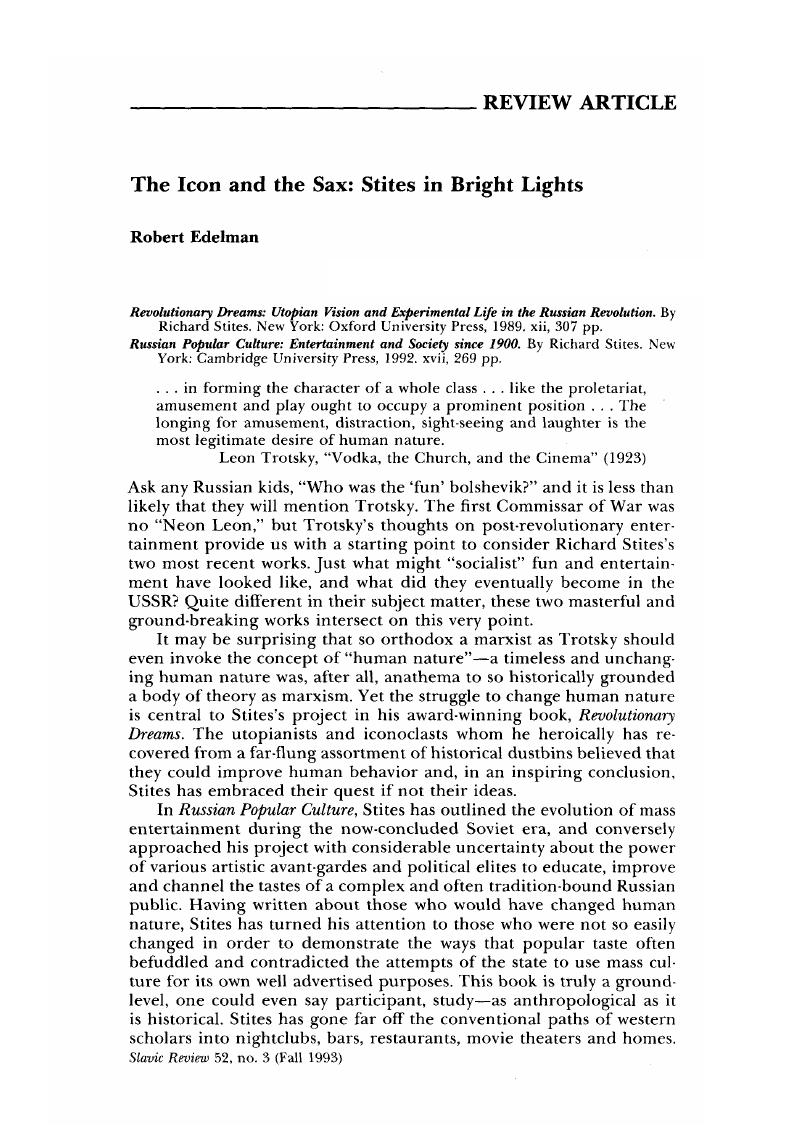No CrossRef data available.
Article contents
The Icon and the Sax: Stites in Bright Lights
Published online by Cambridge University Press: 27 January 2017
Abstract

- Type
- Review Article
- Information
- Copyright
- Copyright © Association for Slavic, East European, and Eurasian Studies. 1993
References
1. Stites's approach comes interestingly close to the left reading of Mikhail Bakhtin's dialogism offered by Robert Stam, “Mikhail Bakhtin and Left Cultural Critique, ” in E. Ann Kaplan, ed., Postmodernism and its Discontents : Theories, Practices (London : Verso, 1988) 118.
2. Russian Popular Culture, 96.
3. Sheila Fitzpatrick, “Cultural Revolution as Class War, ” in Fitzpatrick, ed., Cultural Revolution in Russia, 1928-1931 (Bloomington : Indiana University Press, 1984), 8-40.
4. Revolutionary Dreams, 226.
5. Russian Popular Culture, 1.
6. Herbert Gans, Popular Culture and High Culture (New York : Basic Books, 1974).
7. Stuart Hall, “Notes on Deconstructing the Popular, ” in Raphael Samuel, ed., People's History and Socialist Theory (Boston : Routledge, 1981). 232. See also Raymond Williams, Marxism and Literature (Oxford : Oxford University Press, 1977), 110.
8. Hall's views are given this precise summation by Tania Modleski, “Introduction, ” in Modleski, ed., Studies in Entertainment (Bloomington : Indiana University Press, 1986), xi.
9. Revolutionary Dreams, vii.
10. John Hoberman, Sport and Political Ideology (Austin : University of Texas Press, 1984), 14.
11. Michel de Certeau, The Practice of Everyday Life (Berkeley : University of California Press, 1984), xii-xiii, xv and xvii.
12. Russian Popular Culture, 96.


